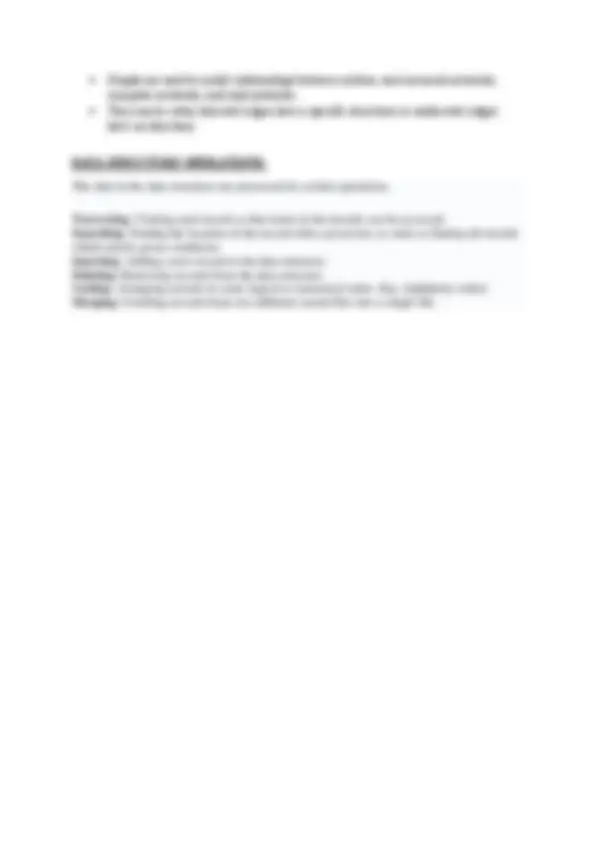



Study with the several resources on Docsity

Earn points by helping other students or get them with a premium plan


Prepare for your exams
Study with the several resources on Docsity

Earn points to download
Earn points by helping other students or get them with a premium plan
Community
Ask the community for help and clear up your study doubts
Discover the best universities in your country according to Docsity users
Free resources
Download our free guides on studying techniques, anxiety management strategies, and thesis advice from Docsity tutors
DATA STRUCTURES AND ALGORITHMS: Basic Terminologies,Elementary Data Organizations,Classifications of Data Structure.
Typology: Study notes
1 / 3

This page cannot be seen from the preview
Don't miss anything!


Data Structure: It refers to the way data is organized, stored, and manipulated in a computer's memory. It defines the relationship between data elements, their operations, and the memory required to store them. CLASSIFICATION OF DATA STRUCTURE: LINEAR DATA STRUCTURE: Linear data structures are data structures in which data elements are organized sequentially, one after another. These structures are called "linear" because the elements are arranged in a linear manner, meaning they form a sequence. Some commonly used linear data structures include arrays, linked lists, stacks, and queues. Array: